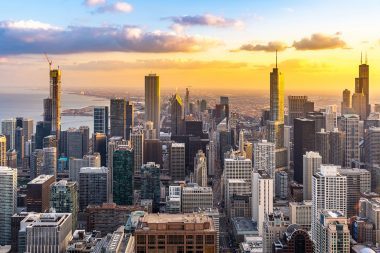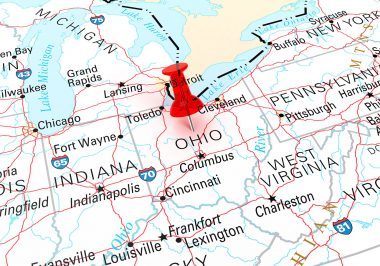What is MSA meaning, real estate?
Updated Fri, Oct 24, 2025 - 5 min read
Top blog articles
If you are a commercial real estate investor, you need to know Metropolitan Statistical Areas (MSA) meaning, real estate, to locate properties poised for growth. The concept of MSAs (formerly Standard Metropolitan Statistical Area (SMSA) was introduced in the early 1900s as a means to delineate areas and gather data. Today, there are 383 Metropolitan Statistical Areas in the U.S.
What is the MSA meaning, in real estate?
An MSA, defined by the U.S. Census Bureau, encompasses one or more counties housing a city with a population of at least 50,000 residents. These could range from major ones like New York City to smaller ones like Carson City, Nevada. These MSAs, designated by the U.S. Office of Management and Budget (OMB), are defined by a core area and adjacent communities. And, they can be delineated by either geographic boundaries or economic activity.
For instance, the Dallas-Fort Worth metroplex constitutes one MSA due to its expansive size and population. Conversely, the San Francisco Bay Area is an MSA owing to its substantial economic activity.
An MSA shouldn’t be confused with a CSA or combined statistical area. Such an area consists of two or more MSAs or micropolitan statistical areas with employment interchange measures reaching at least 15.
By the way, employment interchange measures refer to the combined percentage of workers commuting from the smaller entity to the larger one and the percentage of employment in the smaller entity attributed to workers residing in the larger one.
And, micropolitan statistical areas focus on towns and smaller communities with populations ranging from 10,000 to 50,000.
How does an area qualify as an MSA?
MSAs typically combine multiple interconnected cities and counties, facilitating data compilation for government agencies and businesses. They often center around major cities such as Miami, New York City, or Boston. And, encompass nearby areas into one MSA.
An MSA has some key attributes. To be designated as an MSA, an area must have a city with a population of 50,000 or more people. And, it should be determined by the Office of Management and Budget.
It must be located in an urban region and comprise a central city along with its adjacent communities. These surrounding areas should share strong economic and social ties with the main city.
How important is MSA in the real estate industry?
MSAs are vital in commercial real estate due to their role as U.S. government-defined urban regions. MSAs matter in commercial real estate as they gauge real estate market conditions such as employment and income growth, offering a more precise view of regional economic activity compared to counties or states. Understanding your MSA helps investors grasp the nuances of each submarket within the region, optimizing returns in the process. Did you know, that the National Association of Realtors (NAR) gathers housing data for all metropolitan areas?
What is the advantage of MSA investing?

Investing in an MSA can benefit commercial real estate borrowers in various ways. Properties in MSAs often enjoy easier access to financing with better loan terms, including higher Loan-to-Value (LTV) ratios, lower Debt Service Coverage Ratios (DSCRs), and favorable pricing. That’s because MSAs boast greater stability due to their diverse and robust economies. They provide a wide array of potential tenants and higher rental income rates. Additionally, their proximity to employment centers, often near major transportation hubs, enables easy access for businesses and commuters alike.
The bottom line is that in the largest metro areas, lenders are more inclined to offer favorable pricing and terms on commercial real estate loans, along with relaxed borrower requirements.
Is there any risk in commercial real estate investing in MSAs?
Investing in an MSA carries varying risks depending on the area and investment type. Major MSAs generally pose lower risks for lenders due to higher occupancy rates and faster selling processes in case of default. However, properties in smaller MSAs or rural areas may be riskier to sell if defaults occur.
Rural properties may also face challenges in financing due to stricter requirements for net worth and liquidity.
To address this issue, the United States Department of Agriculture (USDA) provides guarantees for multifamily loans and business financing in rural areas. For example, USDA 538 multifamily loans offer advantageous terms such as high LTV ratios of up to 90%. However, there are income restrictions for residents.
How does MSA impact real estate financing?
As mentioned before, MSAs significantly influence commercial financing. Properties situated in the heart of major MSAs typically enjoy easier access to financing for commercial real estate borrowers. Moreover, these borrowers usually receive more favorable loan terms, including higher LTVs, lower DSCRs, and better pricing. Moreover, lenders may also be more flexible regarding borrower net worth and liquidity requirements.
How does MSA investment impact taxation?
Investing in MSA can bring various tax implications. Properties in major MSAs typically face higher property taxes compared to those in smaller areas. Investors should note that property tax rates can vary significantly within a market and be aware of potential financial impacts. It’s also important to monitor if property taxes are likely to rise in the future, especially if local governments are experiencing financial difficulties, as they may increase taxes accordingly.
MSA, metropolitan statistical area, in commercial real estate: Last thoughts
An MSA denotes a densely populated region with significant social and economic cohesion. Such areas help the government gather relevant statistics such as population censuses. MSAs, according to OMB, comprise at least one urbanized geographic area with a population of 50,000 or more. And, includes a city and its adjacent communities interconnected by social and economic ties.
Read more: REO meaning in real estate









